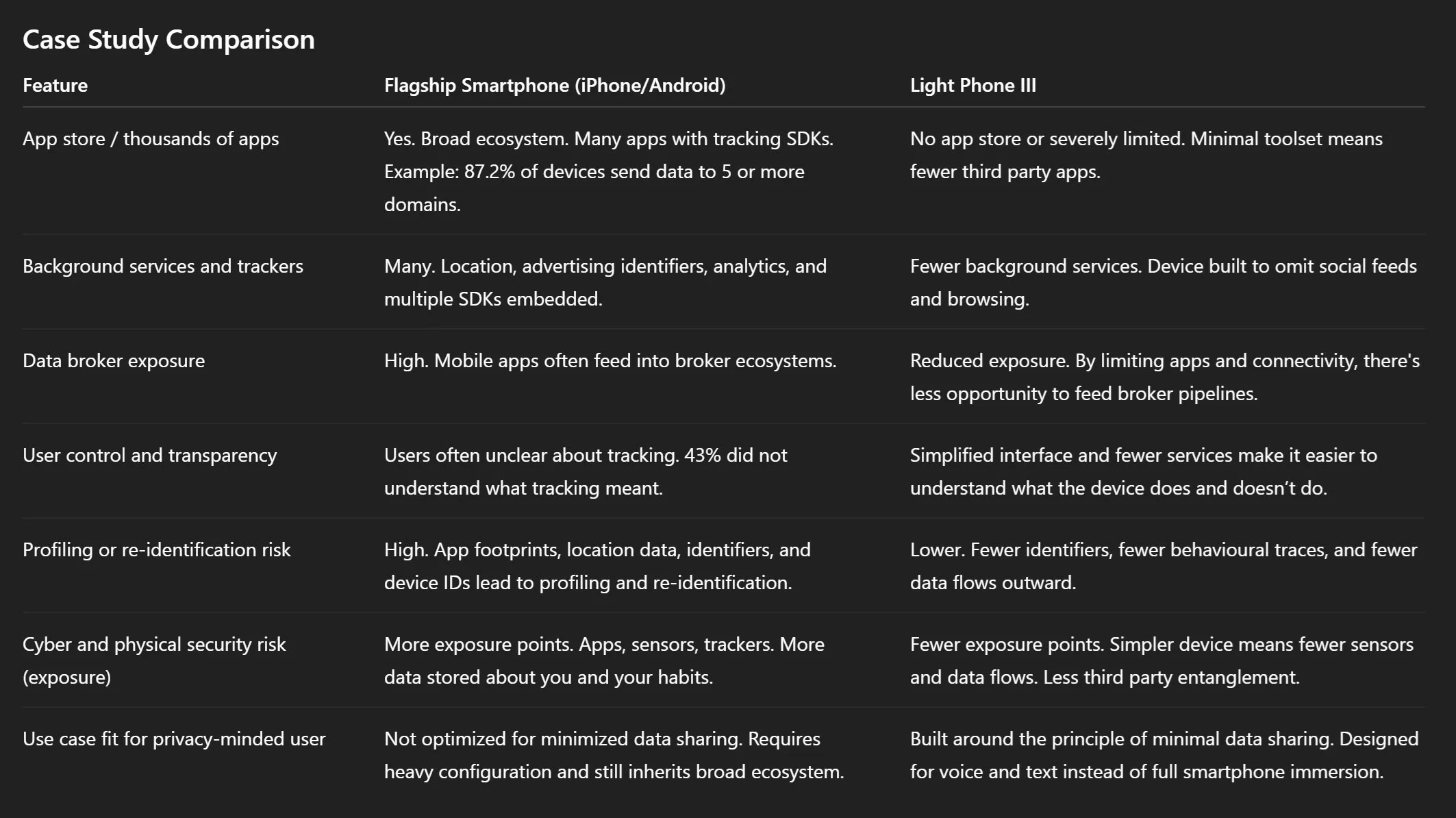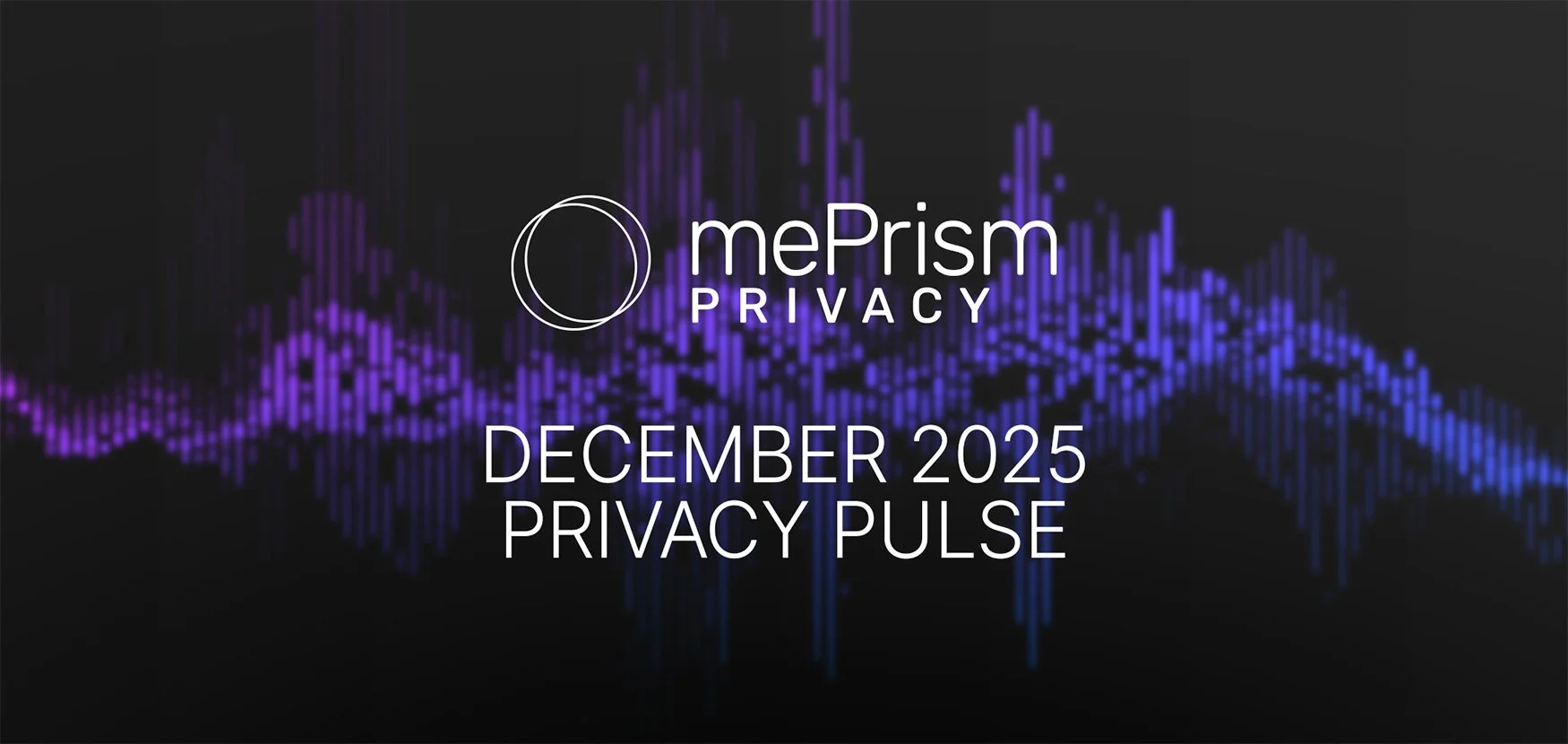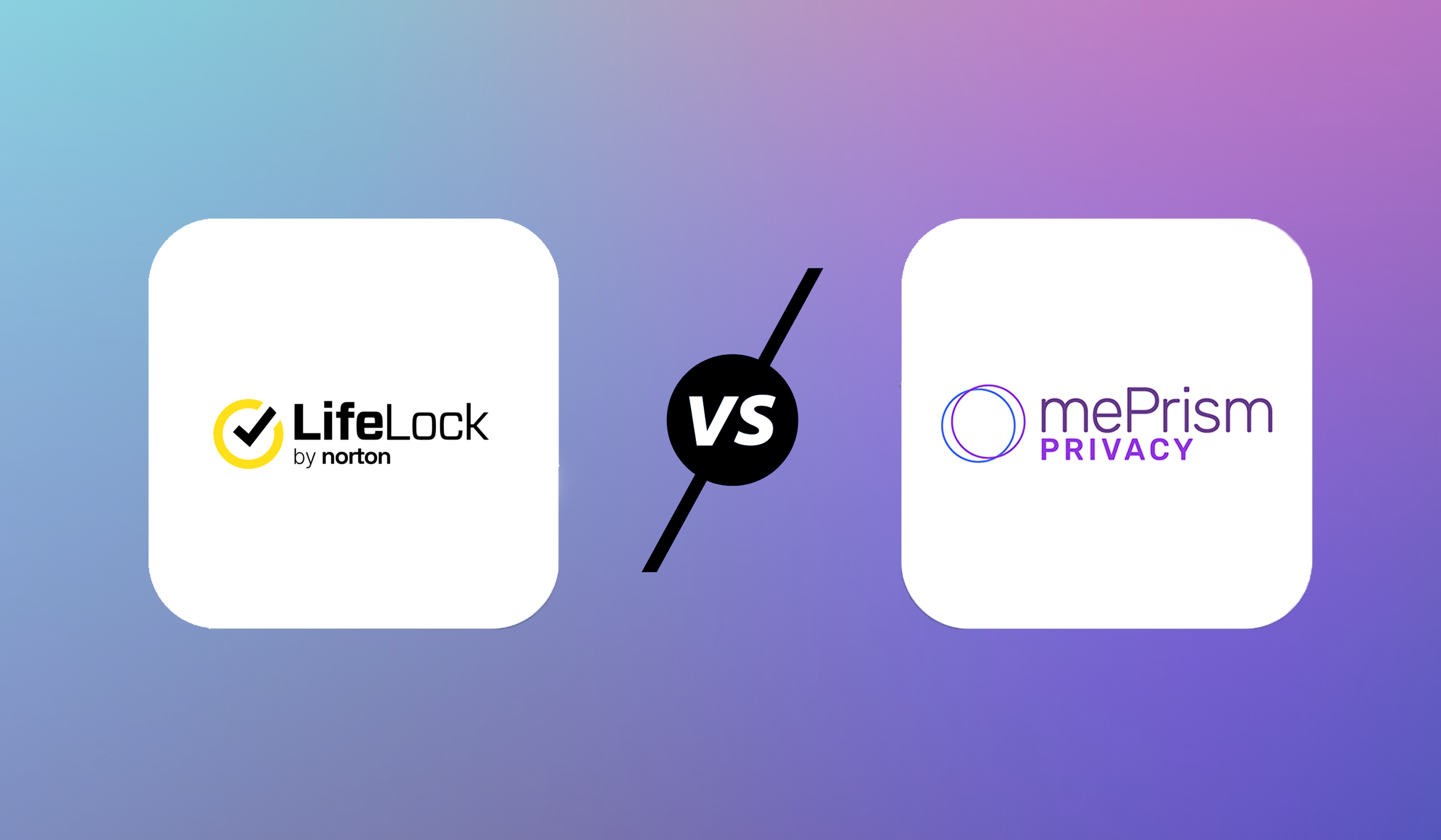How Smartphones Feed Data Brokers and How a Minimalist Phone Can Protect You
What’s happening
Modern smartphones are deeply embedded in the data broker ecosystem and mobile surveillance infrastructure. Studies show massive leaks of personal information from phones, including to third party domains and data brokers. These devices serve as rich feeders into surveillance pipelines rather than just communication tools.
Why it matters
Data brokers harvest identifiers, location, movement patterns, app usage details, and more. That creates risks of identity theft, reputational damage, physical tracking, financial exploitation, and loss of control over your personal data. Smartphones amplify your digital footprint, and those footprints fuel profiling, re-identification, and persistent tracking.
How it affects the reader
Your phone captures your wake and sleep times, apps you use, locations you visit, whom you message, and what you browse.
Because your device sends data to third party domains, you lose control of your personal sphere.
This exposure means your personal data is no longer yours. Brokers may sell movement or location data to government or law enforcement agencies or private firms.
From a privacy standpoint, you are generating a high-risk profile simply by using typical smartphone apps and services.
What can be done
You can adopt a data minimisation strategy. Reduce the number of apps, trackers, and background services on your device. Choose hardware and software that resist embedding into the data broker ecosystem. Make opt-out requests of data brokers. Limit location services. Reduce app permissions. Rethink whether you need the full smartphone experience or if a minimalist device is sufficient for your core needs.
Where mePrism helps
At mePrism we help you identify how your devices and apps feed the data broker industry. We guide you to filter out exposure points and help you choose technology aligned with your right to privacy. For clients who value reducing data exposure, we recommend devices and practices that minimise your digital trail.
Background: Data surveillance on modern smartphones
Modern smartphones, whether high-end iPhones or Android devices, are deeply embedded in the data broker ecosystem and surveillance infrastructure. Key evidence:
A peer‑reviewed study of 17.3 million Android users over 21 months found that 87.2% of devices sent private information to at least five different domains (see the research on arXiv).
A study of 3.5 million people in 33 countries showed that just four apps could uniquely re‑identify 91.2% of individuals (published in PMC).
A journal‑istic analysis demonstrated that nearly 90% of Android apps include trackers or permit data harvesting (as reported by FT Visual Journalism).
The Electronic Frontier Foundation (EFF) and others document how location‑data brokers harvest mobile‑phone location info (often without meaningful user consent) and sell it to governments, law‑enforcement and private firms.
A study found mobile‑phone users largely misunderstand what “app tracking” means: 43% of participants were unclear about what data was being shared or why (University of Bath – see the study in PMC for context).
A French news article estimates the data‑broker market (largely fed by smartphone data) will be ~US$435 billion by 2025, noting that smartphones “know almost everything” about our wake‑times, movements, habits and more (see Le Monde.fr).
Implications for users
Your phone captures identifiers, location, movement patterns, apps used, who you message, what you browse, when you wake or sleep, and where you are. These leak into third party domains including data brokers.
This builds a detailed profile that can lead to:
physical risk (tracking your movements)
reputational risk (behaviours inferred and sold)
financial risk (insurers or marketers using your data)
and loss of control over your personal sphere
Many users assume a smartphone is just for calls and apps. But the data sharing happening in the background is extensive.
How Light Phone III alters the exposure landscape
Let’s compare the feature set and philosophy of the minimalist device Light Phone III with typical flagship smartphones.
What LP3 offers (and what it omits)
The Light Phone website states the device will “never have social media, internet browsing, email, news, or ads.”
It comes with a minimal toolset. Calling, texting, basic tools (alarm, album, camera). No open app store, no infinite feeds, no ad-driven apps.
According to reviewers: “It’s a smarter phone than the previous Light Phones. Still not a smartphone. It has no app store, no social media, no web browser, none of the things we do on our phones all day.”
From the company’s privacy policy. They store billing data (identifiable) for three years unless needed longer for tax, business, or legal purposes.
The minimalistic design reduces the number of sensors, trackers, background services, and third party apps. This reduces exposure by default.
How that leads to lower exposure
With no app store and no broad third party apps, the “attack surface” of data collection is greatly reduced.
Without infinite feeds, social media, and constant internet browsing, there are fewer background services harvesting data.
Fewer installed apps means fewer identifiers, fewer behavioural traces, and fewer opportunities for cross-context profiling.
By minimizing connectivity to the broader data broker ecosystem, you externalize less of your digital trail.
For users of mePrism Privacy, who value reducing data exposure, this device aligns with a data minimisation strategy. Choose a device that by design collects less.
Why this matters for mePrism Privacy customers
Your clients are seeking control over personal data. This device supports a strategy of data minimisation.
Given the scale of the data broker economy, choosing technology that shrinks your footprint is a practical way to reduce risk.
It aligns with mePrism’s values. User-centric. Privacy-first. Advocating for consumer autonomy over their data.
It provides a tangible recommendation. Move from thousands of tracking SDKs on a flagship smartphone to a device designed to limit exposure. This reduces the attack surface for data leaks, profiling, or misuse.
Recommendations
When advising a privacy-conscious client:
Frame the device as one tool among many to reduce exposure by design.
Encourage clients to evaluate how many apps and trackers they currently have and consider behaviours they can shift to a minimalist device.
Use concrete metrics. Example: “On mainstream Android devices, 87% of devices send data to 5 or more domains.” Then ask: “How many fewer domains do you want your device to share with?”
For clients who mostly use calls and texts, the Light Phone III is a strong fit. For heavier app users, consider hybrid models. Use a smartphone for select cases and a minimalist device for daily use.
Emphasize the cost of data. It’s not just about convenience. It’s about how your device becomes part of a surveillance and data brokerage network. You can choose to break that pattern by adopting more privacy-conscious hardware.
Ready to try mePrism yourself?
If you're a company protecting at-risk employees, or an individual concerned about your digital footprint, start your privacy removal today at mePrism.com.
Because your data shouldn’t be a roadmap for violence.
Explore more from Our Team
Browse more posts written by our team to help you stay in control.
Be Part of the Conversation






